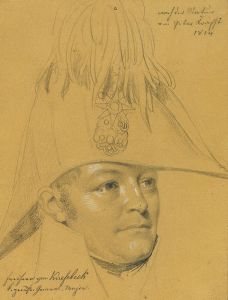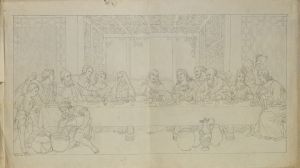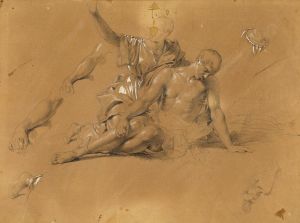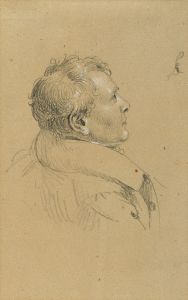
Oedipus und Antigone
A hand-painted replica of Johann Peter Krafft’s masterpiece Oedipus und Antigone, meticulously crafted by professional artists to capture the true essence of the original. Each piece is created with museum-quality canvas and rare mineral pigments, carefully painted by experienced artists with delicate brushstrokes and rich, layered colors to perfectly recreate the texture of the original artwork. Unlike machine-printed reproductions, this hand-painted version brings the painting to life, infused with the artist’s emotions and skill in every stroke. Whether for personal collection or home decoration, it instantly elevates the artistic atmosphere of any space.
Johann Peter Krafft's painting "Oedipus und Antigone" is a significant work of art that captures a poignant moment from Greek mythology. Krafft, an Austrian painter born in 1780, was known for his historical and genre paintings, and he created this particular piece in the early 19th century. The painting depicts the tragic figures of Oedipus and his daughter Antigone, characters from the ancient Greek tragedies written by Sophocles.
The story of Oedipus is one of the most famous in Greek mythology. Oedipus, the King of Thebes, is a tragic hero who unwittingly fulfills a prophecy that he will kill his father and marry his mother, leading to disaster for himself and his family. After the truth of his actions is revealed, Oedipus blinds himself and goes into exile, accompanied by his loyal daughter Antigone. Krafft's painting captures the moment of their wanderings, highlighting the themes of loyalty, suffering, and familial duty.
In "Oedipus und Antigone," Krafft employs a neoclassical style, which was prevalent during his time. The neoclassical movement sought to revive the classical art and culture of ancient Greece and Rome, emphasizing clarity, order, and balance. Krafft's use of this style is evident in the composition and the portrayal of the figures, which are rendered with a sense of dignity and grace. The painting's composition draws the viewer's attention to the emotional bond between the father and daughter, emphasizing Antigone's role as a devoted and caring figure.
The color palette used by Krafft is subdued, with earthy tones that reflect the somber mood of the scene. The background is typically minimalistic, focusing the viewer's attention on the figures of Oedipus and Antigone. Krafft's attention to detail is evident in the careful rendering of their expressions and gestures, which convey a deep sense of pathos and humanity.
Johann Peter Krafft was a prominent figure in the Austrian art scene during his lifetime. He studied at the Academy of Fine Arts in Vienna and later in Paris, where he was influenced by the works of Jacques-Louis David, a leading neoclassical painter. Krafft's career was marked by his ability to blend historical themes with a sense of narrative drama, making his works both educational and emotionally engaging.
"Oedipus und Antigone" is housed in the Belvedere Museum in Vienna, which holds a significant collection of Austrian art. The painting is an important example of Krafft's work and is appreciated for its artistic merit as well as its exploration of classical themes. It serves as a testament to the enduring power of Greek mythology and its influence on European art and culture.
Through "Oedipus und Antigone," Johann Peter Krafft not only illustrates a pivotal moment from a well-known myth but also captures the universal themes of tragedy and redemption. The painting remains a valuable piece of art history, reflecting the neoclassical ideals of the time and Krafft's skill as a storyteller through his art.












